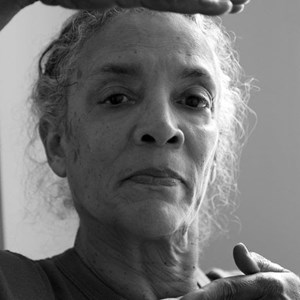
The Getty Research Institute has acquired the archive of Maren Hassinger. The archive contains original sketches, drawings for large scale projects, photographs, correspondence, print media, handwritten notes, documentation of exhibitions, and audio-visual material.
“The Maren Hassinger archive complements, and supplements, texts and other research materials related to African American art in GRI collections, specifically within the context of mixed-media sculpture and performance on both coasts,” says Mary Miller, director of the Getty Research Institute. “Hassinger’s archive along with other GRI archival holdings—for example, the Kitchen archive, and materials related to the Woman’s Building, and performance artists such as Blondell Cummings and Suzanne Lacy—will help expand and complicate narratives of women artists during the twentieth century.”
The collection encompasses a wide variety of material—ranging from the early 1970s to the late 2000s. Overall, her work can be characterized by its active engagement with thought-provoking forms of experimentation with a variety of natural forms, such as bushes, trees, and branches. Her work can also be characterized by its exploration of the tensions between said organic objects and industrial materials such as iron and steel.
Her archive also details her affiliations with prominent African American Los Angeles-based artists, as well as histories of often undocumented African American art exhibitions, organizations, artists, lectures, and meetings during an era of exclusion from the mainstream artworld.
“In a career spanning more than fifty years, Maren Hassinger has distinguished herself as a true innovator whose mastery of visual and performance art practices has influenced generations of artists,” says LeRonn Brooks, Curator of the African American Art History Initiative at the Getty Research Institute. “Through her work as an artist, and teaching, Hassinger has broadened our understanding of the spectrum, and confluence, of contemporary artistic practices. The material contained in her archive (spanning back to her time at Bennington College and the University of California during the 1960 and 1970s) will help researchers, and the general public, to better understand the conceptual depth, and imaginary, of a unique thinker and practitioner whose contributions have broadened the scope of what are the significant contributions of Black women to the canon of American art.”
“"I am very honored for my archive to be included in the Getty Research Institute,” says Maren Hassinger. “The GRI has a profound influence on the historical investigations of contemporary art. After all my trials and tribulations in this field, it is gratifying to know that my work will be preserved for future engagement."
Hassinger was born in Los Angeles, CA. She received a BA from Bennington College and an MFA from the University of California, Los Angeles. There, her study of fiber art proved beneficial to her work in sculpture, and later, her performance artwork. Since 1997, Hassinger has been the Director of the Rinehart School of Sculpture at Maryland Institute College of Art, Baltimore, where she has brought her spirit of experimentation to teaching.
While in Los Angeles, Hassinger began exchanging artistic ideas, and realizing new artwork and performances in non-art spaces with a group of African American artists in that included David Hammons, Ulysses Jenkins, and Houston Conwill. Parks, gardens, and abandoned buildings became the spaces where Hassinger performed new experimental works that, like her sculptures, conflated natural and industrial themes and challenged discourses surrounding the performativity of race and gender.
During this time, Hassinger had also befriended Senga Nengudi, a performance artist and sculptor who had recently graduated from California State Los Angeles with an M.A. in Sculpture in 1971. Hassinger and Nengudi soon began collaborating on performance-based projects in which they experimented with socially relevant concepts while integrating sculpture and dance. Their collaborations corresponded with trends in the feminist movement of the 1970s in which women artists worked with non-traditional art materials—as well as video art and photography—to subvert hierarchical and patriarchal traditions. Working during an era of widespread exclusion of African American artists, Hassinger and Nengudi often aimed their critiques at art institutions, the art world in general, and the exclusionary practices of the white-dominated feminist movement.
Their most recent collaboration is Side by Side (2006), a video that presents a retrospective of their collaborations that was first shown at the Nomadic Night Series Foundation’s Cartier pour l’art Contemporain in Paris France. Other collaborations with Nengudi include Nature’s Way (1986), Four (1984), Spooks Who Sat by the Door (1983), Flying (1982), Alive Performance (1980), Get Up (1980), Ceremony for Freeway Vets (1978), and Performance Piece – Nylon Mesh and Maren Hassinger (1977).
Image :MAREN HASSINGER, Headshot, 2019 Photo Credit: Grace Roselli, Pandora’s BoxX Project Instagram:@gracerosellistudio

ArtDependence Magazine is an international magazine covering all spheres of contemporary art, as well as modern and classical art.
ArtDependence features the latest art news, highlighting interviews with today’s most influential artists, galleries, curators, collectors, fair directors and individuals at the axis of the arts.
The magazine also covers series of articles and reviews on critical art events, new publications and other foremost happenings in the art world.
If you would like to submit events or editorial content to ArtDependence Magazine, please feel free to reach the magazine via the contact page.